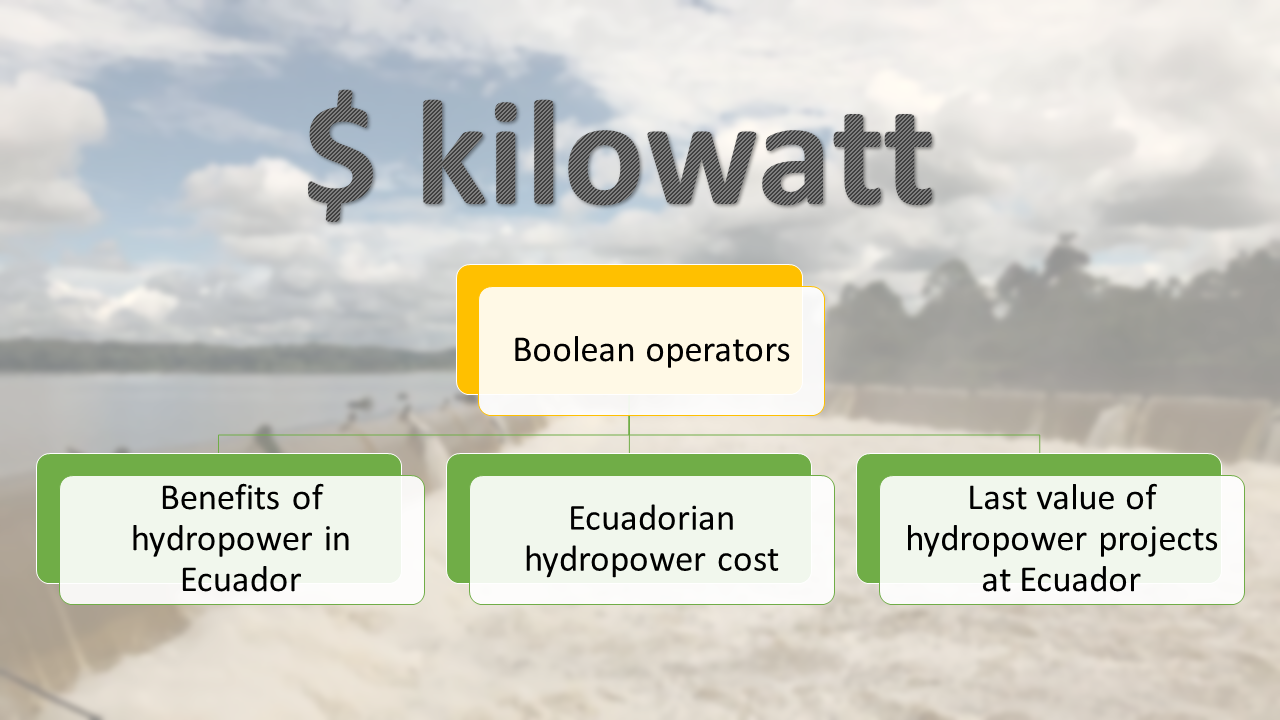Costo comparativo por kilovatio de los últimos proyectos hidroeléctricos en Ecuador
DOI:
https://doi.org/10.18779/ingenio.v5i1.473Palabras clave:
Ecuador, costo, hidroeléctricas, energía, renovable, kilovatioResumen
La hidroelectricidad es la mayor fuente renovable globalmente utilizada, para el 2020 ésta constituye el 77% de la matriz energética en Ecuador, pero los costos con los cuales se desarrollan estos proyectos generan el cuestionamiento entre el costo y beneficio de dichas inversiones debido a los impactos sociales, ambientales y culturales que se crean. Mediante una metodología cuantitativa en base a términos de inclusión y exclusión se encontró que las ultimas cinco centrales hidroeléctricas del Ecuador inauguradas en el período 2015 – 2019 contienen costos más altos del promedio global en comparación con el cálculo de la Agencia Internacional de las Energías Renovables, específicamente, para Coca Codo Sinclair se tiene un 79% de incremento, 34% para Sopladora, 21% para Minas San Francisco, 12% para Delsintagua y 119% para la central Manduriacu. Además, el costo promedio globalmente calculado por IRENA en el 2020 fue 1,472 USD/kWh, en el caso promedio de 499 MW del Ecuador se tiene un costo de 2,018 USD/kWh, valor 37% adicional a manera comparativa. Las decisiones de inversión en nuevos proyectos hidroeléctricos deben mejorarse con base en los datos de las plantas existentes, buscando mitigar los impactos, generando un análisis crítico y definiendo las metas del país con las poblaciones involucradas.
Descargas
Citas
C. Llamosas and B. K. Sovacool, “The future of hydropower? A systematic review of the drivers, benefits and governance dynamics of transboundary dams,” Renew. Sustain. Energy Rev., vol. 137, no. 0321, pp. 110–124, 2021, doi: 10.1016/j.rser.2020.110495.
ICOLD, “General Synthesis of World register of dams,” 2021. [Online]. Available: https://www.icold-cigb.org/article/GB/world_register/general_synthesis/general-synthesis. [Accessed: 19-May-2021].
International Hydropower Association, “Hydropower Status Report 2021: Sector trends and insights,” 2021.
J. L. Chiang, H. C. Yang, Y. R. Chen, and M. H. Lee, “Potential impact of climate change on hydropower generation in southern Taiwan,” Energy Procedia, vol. 40, pp. 34–37, 2013, doi: 10.1016/j.egypro.2013.08.005.
S. Naranjo Silva, D. J. Punina Guerrero, and J. J. Morales Martinez, “Energía solar en paradas de bus una aplicación moderna y vanguardista,” Rev. InGenio, vol. 4, no. 1, pp. 58–68, 2021, doi: 10.18779/ingenio.v4i1.368.
K. Daniel and M. Gaviria, “Impactos sociales y el tamaño óptimo de los megaproyectos hidroeléctricos,” Universidad Nacional de Colombia, 2018.
T. Teräväinen, “Negotiating water and technology-Competing expectations and confronting knowledges in the case of the Coca Codo Sinclair in Ecuador,” Water (Switzerland), vol. 11, no. 3, pp. 1–18, 2019, doi: 10.3390/w11030411.
Y. Yang, T. Sammut-Bonnici, and J. McGee, “LAD Case Study of Funding Coca Codo Sinclair: Correa’s Bet on Sustainable Power in Ecuador,” Wiley Encyclopedia of Management, no. November, pp. 68–69, 2002.
D. A. Alvarez-Chiriboga, “Prediction model of the energy production of the Coca Codo Sinclair Hydroelectric Plant, based on computational learning techniques,” Army Forces University of Ecuador, 2020.
R. Spalding-Fecher et al., “The vulnerability of hydropower production in the Zambezi River Basin to the impacts of climate change and irrigation development,” Mitig. Adapt. Strateg. Glob. Chang., vol. 21, no. 5, pp. 721–742, 2016, doi: 10.1007/s11027-014-9619-7.
S. W. D. Turner, Y. N. Jia, and S. Galelli, “Examining global electricity supply vulnerability to climate change using a high-fidelity hydropower dam model,” Sci. Total Environ., vol. 590–591, pp. 663–675, 2017, doi: 10.1016/j.scitotenv.2017.03.022.
S. Naranjo-Silva and J. Álvarez del Castillo, “Hydropower: Projections in a changing climate and impacts by this ‘clean’ source,” CienciAmérica, vol. 10, no. 2, p. 32, Jul. 2021, doi: 10.33210/ca.v10i2.363.
A. Briones Hidrovo, J. Uche, and A. Martínez-Gracia, “Determining the net environmental performance of hydropower: A new methodological approach by combining life cycle and ecosystem services assessment,” Sci. Total Environ., vol. 712, p. 44, 2020, doi: 10.1016/j.scitotenv.2019.136369.
B. Tarroja, A. AghaKouchak, and S. Samuelsen, “Quantifying climate change impacts on hydropower generation and implications on electric grid greenhouse gas emissions and operation,” Energy, vol. 111, pp. 295–305, 2016, doi: 10.1016/j.energy.2016.05.131.
Ministry of Electricity and Renewable Energy of Ecuador, “The Gained Decade of the Electricity Sector in Ecuador,” Quito, 2017.
International Renewable Energy Agency, “Renewable Energy Capacity Highlights 2019,” Irena, vol. 00, no. March 2020, pp. 1–3, 2020.
IRENA, “Renewable Energy Statistics 2020. Renewable hydropower (including mixed plants),” 2020.
International Hydropower Association, “Hydropower Status Report 2019: Sector trends and insights,” 2019.
C. Zarfl, A. E. Lumsdon, J. Berlekamp, L. Tydecks, and K. Tockner, “A global boom in hydropower dam construction,” Aquat. Sci., vol. 77, no. 1, pp. 161–170, 2015, doi: 10.1007/s00027-014-0377-0.
The International Journal on Hydropower, “World atlas and industry guide 2015,” Wallington, 2015.
L. Berga, “The Role of Hydropower in Climate Change Mitigation and Adaptation: A Review,” Engineering, vol. 2, no. 3, pp. 313–318, 2016, doi: 10.1016/J.ENG.2016.03.004.
K. Liden, R.; Lyon, “The Hydropower Sustainability Assessment Protocol for Use by World Bank Clients - Lessons Learned and Recommendations,” Washington DC, 2014.
International Hydropower Association, Hydropower Sustainability Assessment Protocol, vol. 56, no. 3. Sutton, London, 2018.
MERNNR, “National Energy Efficiency Plan,” 2018, 2018. [Online]. Available: https://www.celec.gob.ec/hidroagoyan/images/PLANEE_INGLES/NationalEnergyEfficiencyPlan20162035_2017-09-01_16-00-26.html.
IHA, “Hydropower Status Report 2020,” International Hydropower Association, pp. 1–83, 2020.
CELEC, “CELEC EP genera y transmite más del 90 por ciento de la energía eléctrica limpia que consume el país y exporta a los países vecinos,” 2020. [Online]. Available: https://www.celec.gob.ec/hidroagoyan/index.php/sala-de-prensa/noticias/722-celec-ep-genera-y-transmite-mas-del-90-por-ciento-de-la-energia-electrica-limpia-que-consume-el-pais-y-exporta-a-los-paises-vecinos#:~:text=En este sentido%2C de la,a través de cen. [Accessed: 22-May-2021].
Ministry of Energy and Non-Renewable Resources, “Master Plan of Electricity 2019-2027,” 2019.
P. E. Carvajal, F. G. N. Li, R. Soria, J. Cronin, G. Anandarajah, and Y. Mulugetta, “Large hydropower, decarbonisation and climate change uncertainty: Modelling power sector pathways for Ecuador,” Energy Strateg. Rev., vol. 23, no. January, pp. 86–99, 2019, doi: 10.1016/j.esr.2018.12.008.
IRENA, Renewable Power Generation Costs in 2020. 2021.
A. Briones Hidrovo, J. Uche, and A. Martínez-Gracia, “Accounting for GHG net reservoir emissions of hydropower in Ecuador,” Renew. Energy, vol. 112, pp. 209–221, 2017, doi: 10.1016/j.renene.2017.05.047.
A. Alarcon, “The hydroelectric plants in Latin America, where are we? and where are we going?,” 2019.
M. Van Vliet, L. Van Beek, S. Eisner, M. Flörke, Y. Wada, and M. F. P. Bierkens, “Multi-model assessment of global hydropower and cooling water discharge potential under climate change,” Glob. Environ. Chang., vol. 40, pp. 156–170, 2016, doi: 10.1016/j.gloenvcha.2016.07.007.
M. Mattmann, I. Logar, and R. Brouwer, “Hydropower externalities: A meta-analysis,” Energy Econ., vol. 57, pp. 66–77, 2016, doi: 10.1016/j.eneco.2016.04.016.
G. Voegeli, W. Hediger, and F. Romerio, “Sustainability assessment of hydropower: Using a causal diagram to seize the importance of impact pathways,” Environ. Impact Assess. Rev., vol. 77, no. October 2018, pp. 69–84, 2019, doi: 10.1016/j.eiar.2019.03.005.
A. R. Ghumman, H. Haider, I. Yousuf, and M. Shafiquzamman, “Sustainable Development of Small-Sized Hydropower Plants: Multilevel Decision-Making from Site Selection to Optimal Design,” Arab. J. Sci. Eng., vol. 45, no. 5, pp. 4141–4159, 2020, doi: 10.1007/s13369-020-04407-8.
S. Naranjo-Silva and J. Álvarez del Castillo, “An Approach of the Hydropower: Advantages and Impacts. A Review,” J. Energy Res. Rev., vol. 8, no. 1, pp. 10–20, Jun. 2021, doi: 10.9734/jenrr/2021/v8i130201.
B. Van Der Zwaan et al., “Energy technology roll-out for climate change mitigation: A multi-model study for Latin America,” Energy Econ., vol. 56, pp. 526–542, 2015, doi: 10.1016/j.eneco.2015.11.019.

Publicado
Cómo citar
Número
Sección
Licencia
Derechos de autor 2021 Sebastián Naranjo-Silva, Diego Javier Punina Guerrero, Javier Álvarez del Castillo

Esta obra está bajo una licencia internacional Creative Commons Atribución-NoComercial-CompartirIgual 4.0.
Licensing Agreement
This journal provides free access to its content through its website following the principle that making research available free of charge to the public supports a larger exchange of global knowledge.
Web content of the journal is distributed under a Attribution-NonCommercial-ShareAlike 4.0 International.
Authors may adopt other non-exclusive license agreements for the distribution of the version of the published work, provided that the initial publication in this journal is indicated. Authors are allowed and recommended to disseminate their work through the internet before and during the submission process, which can produce interesting exchanges and increase citations of the published work.












